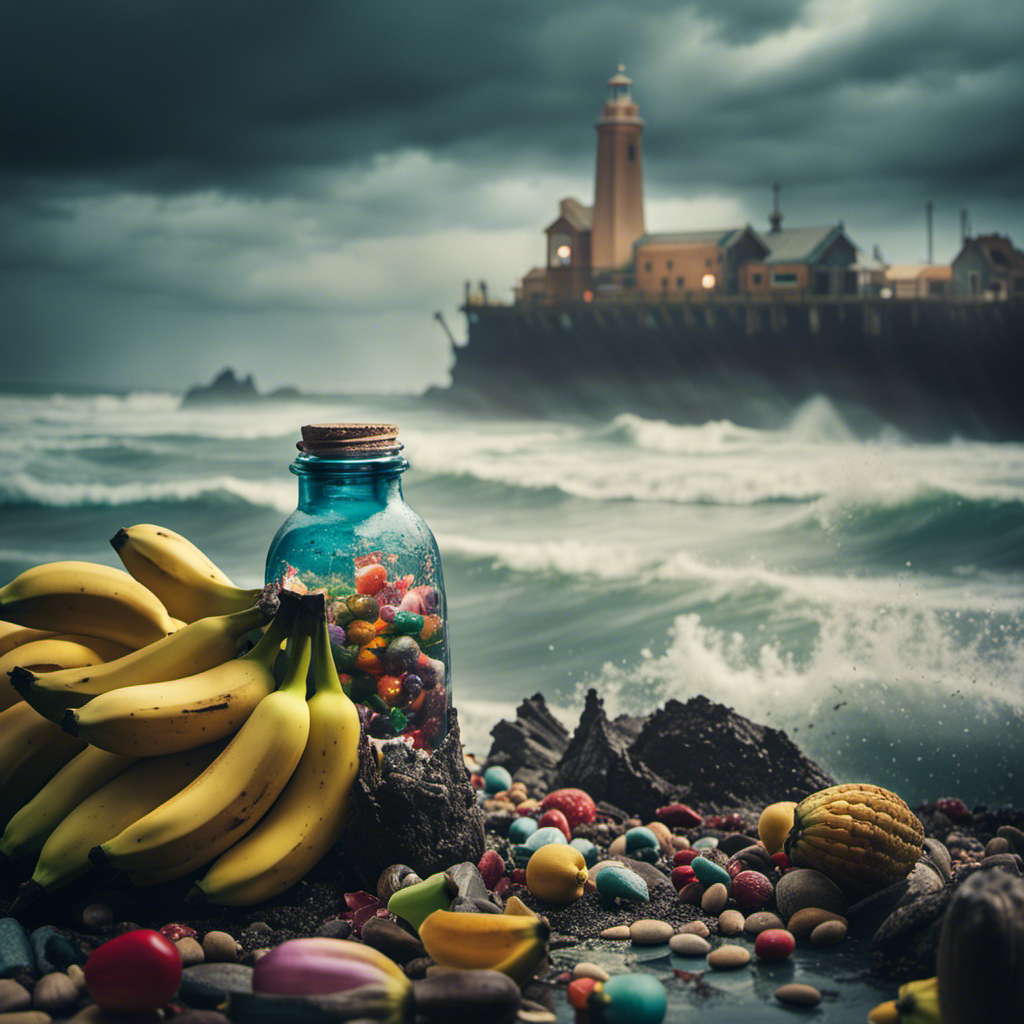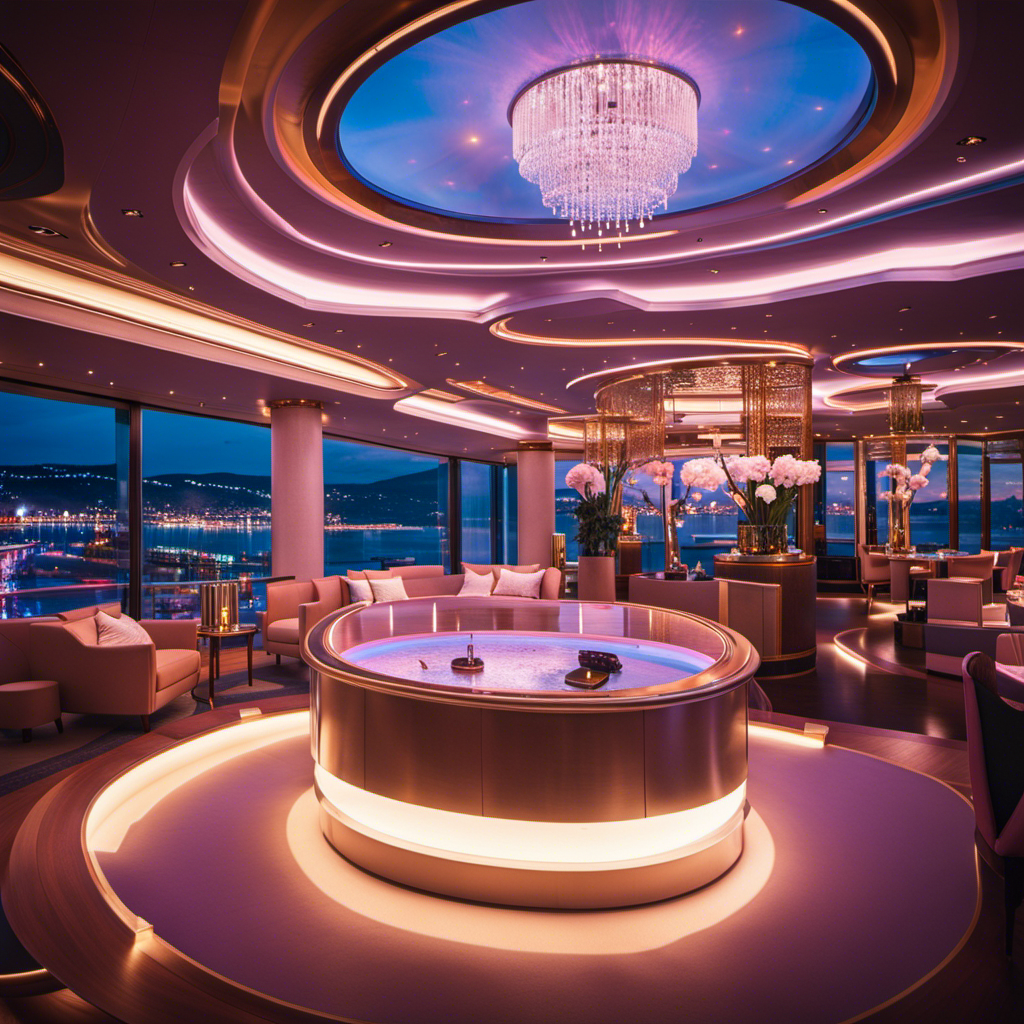You may think that superstitions are just baseless beliefs, right? Yet, within the realm of nautical traditions, these superstitions are passed from one generation of sailors to another and are taken very seriously.
From elevators skipping the 13th floor to the tradition of breaking bottles on ships, these customs are believed to ward off bad luck and bring good fortune.
And let’s not forget about the superstitions surrounding women on board, certain colors, and even bananas.
In this article, we’ll dive deep into the fascinating world of sea superstitions and explore the reasons behind these age-old beliefs.
Key Takeaways
- Elevators often skip the 13th floor and some ships don’t have a Deck 13 due to superstition and the belief that omitting the 13th floor averts bad luck.
- Breaking a bottle of champagne on a ship is a tradition believed to bring good luck, and ships with unbroken christening bottles have experienced tragedies.
- Women are considered to bring bad luck on board ships, but topless woman figureheads are believed to calm the waters.
- Red and black are considered unlucky colors at sea, while silver and gold are believed to bring good luck.
Triskaidekaphobia and Elevators
I always feel a bit uneasy when I step into an elevator and notice that the buttons jump from 12 to 14, thanks to triskaidekaphobia and the superstition surrounding the number 13.
This fear of the number 13 in elevators is deeply rooted in superstition. Many buildings skip the 13th floor altogether, as if avoiding it will somehow avert bad luck. The omission of this floor is not only common in elevators, but also in other areas of architecture.
Some believe that by skipping the 13th floor, they are protecting themselves from potential harm or misfortune. It’s fascinating how such a simple act, like omitting a number from elevator buttons, can be influenced by centuries-old superstitions.
The Tradition of Breaking Bottles
Breaking a bottle of champagne on a ship is a longstanding tradition believed to bring good luck. The significance of breaking bottles and its historical origins trace back to ancient times when pouring liquid on the hull of a ship was a practice used to check for cracks.
The tradition evolved into breaking a bottle as a way to symbolize the ship’s successful launch and to ensure its safe voyage. Today, the role of bottle breaking in ship christening ceremonies remains an important ritual.
Cruise lines take meticulous measures to ensure the bottle breaks, as ships with unbroken christening bottles have experienced tragic incidents. By adhering to this tradition, sailors and shipbuilders believe that they are invoking good luck and protection for the ship and its crew.
Women at Sea: Superstitions and Beliefs
Sailors have long held beliefs about having females on board, associating them with bad luck and distractions. However, it is important to understand that these superstitions are not based on any factual evidence.
Women have been an integral part of maritime history, playing crucial roles in navigation, communication, and ship maintenance. Despite the challenges they faced, women have made significant contributions to the maritime industry, breaking barriers and challenging gender stereotypes.
Today, there are ongoing efforts to promote gender equality at sea, addressing issues such as equal opportunities, fair treatment, and representation of women in leadership positions. Recognizing the historical significance of women at sea is vital in understanding the progress that has been made and the work that still needs to be done to achieve true equality in the maritime world.
Unlucky Colors: Red, Black, and More
Avoiding the colors red and black is believed to bring good luck while at sea. Sailors have long held superstitions about certain colors, attributing them with either good or bad fortune. In the maritime world, silver is considered a lucky color. It is associated with wealth, prosperity, and abundance. Many sailors believe that having silver objects or decorations onboard can attract positive energy and ward off misfortune. On the other hand, pouring wine on the deck is seen as a good luck offering. This tradition dates back centuries and is believed to appease the gods of the sea. It is thought to ensure safe and smooth sailing by showing respect and gratitude. So, if you want to increase your chances of a fortunate voyage, remember to avoid red and black and embrace the luck that silver and wine can bring.
| Superstitions around the color silver | Superstitions related to pouring wine on the deck |
|---|---|
| Silver is considered a lucky color | Pouring wine is a good luck offering |
| Associated with wealth and prosperity | Tradition to appease the gods of the sea |
| Attracts positive energy and fortune | Ensures safe and smooth sailing |
The Mysterious Curse of Bananas
I’ve always been fascinated by the mysterious curse associated with bananas at sea. The curse of bananas: fact or fiction? Let’s delve into the historical origins of the banana curse.
The reputation of bananas as unlucky dates back to the 1700s when trade ships carrying bananas were believed to disappear. This association stems from the belief that bananas attracted deadly spiders and emitted dangerous fumes. As a result, some fishermen avoid bananas and anything associated with them, considering them a harbinger of disaster.
While some may dismiss the banana curse as mere superstition, it is important to recognize the deep-rooted fears and beliefs that have permeated maritime history. Whether fact or fiction, the banana curse continues to capture the imagination and intrigue of sailors and enthusiasts alike.
Elevator Superstitions: Skipping the 13th Floor
After discussing the mysterious curse of bananas, let’s delve into another intriguing superstition: elevator superstitions and why they often skip the 13th floor.
The number 13 has long been associated with bad luck and superstitions, leading many buildings to omit the 13th floor altogether. Here’s why elevators skip this supposedly unlucky floor:
-
Triskaidekaphobia: This term refers to the fear of the number 13. Many people suffer from this phobia, leading to the avoidance of anything associated with the number.
-
Superstition: The belief that the 13th floor brings bad luck is deeply ingrained in many cultures. To avoid potential misfortune, building owners and elevator manufacturers often skip the 13th floor.
-
Symbolism: By omitting the 13th floor, it is believed that any negative energy or bad luck associated with the number is avoided, creating a sense of security for those who are superstitious.
-
Cultural Influence: The superstition surrounding the number 13 and its impact on elevators can be traced back to various cultural and historical factors, including ancient traditions and religious beliefs.
-
Psychological Comfort: Even for those who don’t necessarily believe in superstitions, skipping the 13th floor can provide a sense of psychological comfort and peace of mind, knowing that they are not on a floor associated with negative connotations.
Although these superstitions may seem irrational to some, the practice of skipping the 13th floor in elevators continues to be prevalent in many buildings, catering to the beliefs and fears of those who consider the number 13 to be unlucky.
Christening Bottles: Luck or Tragedy?
Breaking a bottle of champagne on a ship is a tradition believed to bring good luck. One of the fascinating aspects of this tradition is the significance of unbroken christening bottles.
These bottles hold a special place in maritime traditions as they symbolize safety and protection for the ship and its crew. It is believed that ships with unbroken christening bottles have been spared from tragedies at sea.
To ensure that the bottle breaks and brings the desired good luck, cruise lines take measures such as using thinner glass or scoring the bottle beforehand. This shows the powerful role that superstitions play in maritime traditions, as sailors and shipbuilders place great importance on following these rituals to ensure a safe and successful voyage.
Sea Superstitions: Women, Colors, and Bananas
Avoiding certain actions, like cutting hair or trimming nails at sea, is considered bad luck by sailors. It is believed that women on ships bring bad luck, as they are seen as distracting and unable to handle ship labor. However, there are also myths and realities surrounding this belief.
Women have been sailing alongside men for centuries, proving that they are more than capable of contributing to the success of a voyage. The symbolism of colors at sea also plays a significant role in superstitions. Red and black are considered unlucky colors, while silver and gold are believed to bring good luck. The color of the sky in the morning can even be seen as a warning for sailors.
These superstitions highlight the importance of rituals and beliefs in the maritime world, shaping the experiences and actions of those at sea.
Frequently Asked Questions
Are There Any Other Superstitions Related to Elevators Besides Skipping the 13th Floor?
Yes, there are other superstitions related to elevators besides skipping the 13th floor. Elevator malfunctions and accidents can be seen as signs of bad luck or even supernatural forces at play.
How Did the Tradition of Breaking Bottles on Ships to Bring Good Luck Originate?
The tradition of breaking bottles on ships to bring good luck originated from the belief that the shattered glass would ward off evil spirits and ensure a safe voyage. It became a significant ritual in maritime culture.
Are There Any Other Groups or Individuals Believed to Bring Bad Luck at Sea Besides Women?
Sailors have long believed that certain animals bring bad luck at sea. Black cats are seen as omens of disaster, while albatrosses are thought to signal impending doom. These superstitions have origins in ancient seafaring traditions and continue to hold significance today.
Why Are Red and Black Considered Unlucky Colors at Sea?
Sailors believe red and black are unlucky colors at sea due to the superstition surrounding them. The origins of this belief are rooted in the association of red with blood and black with darkness, both symbolizing danger and death in the treacherous waters.
What Are Some Other Historical Events or Incidents That Have Contributed to the Belief in the Banana Curse?
Historical origins of the banana curse stem from the belief that trade ships carrying bananas mysteriously vanished. Cultural significance is seen in the association of bananas with deadly spiders and fumes, leading to a widespread fear and avoidance of the fruit.
Meet Asra, a talented and adventurous writer who infuses her passion for exploration into every word she writes. Asra’s love for storytelling and her insatiable curiosity about the world make her an invaluable asset to the Voyager Info team.
From a young age, Asra was drawn to the power of words and their ability to transport readers to far-off lands and magical realms. Her fascination with travel and cultures from around the globe fueled her desire to become a travel writer, and she set out on a journey to turn her dreams into reality.











